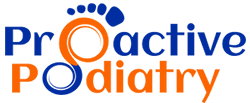Talipes equinovarus is “talipes equinus and talipes varus combined; the foot is plantarflexed, inverted, and adducted” most commonly known and referred to as the general term “clubfoot”.
Clubfoot is used to describe a group of lower limb deformities present at birth (congenital). The deformity can range from mild to severe and may affect one or both of the ankles and/or feet.
Clubfoot if not treated can significantly affect gait, in which weight is placed on the outside or balls of the feet.
In the USA it is reported that 1 in every 1,000 babies is born with club foot, with males being twice as likely to have the condition.
According to the National Health Service (NHS), UK, if one child is born with a club foot there is a 1 in 30 chance that his/her younger sibling will also be affected.
Symptoms of Clubfoot:
- The tendons on the inside of the leg are shortened.
- The bones have an unusual shape.
- Achilles tendon is tightened and the calf muscles are generally underdeveloped.
- The foot/feet points down and inwards and the soles of the feet face each other.
- 50% of patients have bilateral club foot (both feet are affected).
- If only one foot is affected, it is usually slightly shorter than the other (especially the heel area).
If left untreated pain and discomfot may present when the child begins to stand and walk. The risk of developing arthritis later in life and ulceration on the deformed areas due to pressure is high. The unusual appearance of the foot may also cause self-image problems.
There are several different categories of clubfoot:
Equinovarus
The foot is turned inward and downward . If both feet are effected the toes point inward like a prayer position. The Achille tendon is often very tight, making it impossible to bring the foot up to a normal position without passive help.
Calcaneal Valgus or Valgus Calcaneus
This type of clubfoot is more common. The foot is sharply angled at the heel, with the heel pointing up and outward.
Metatarsus Adductus
The front part of the foot is turned inward towards the midline of the body.
Metatarsus Varus
The front part of the foot is turned inward and inverted. More evident after 1-3 months after birth. With treatment the foot can look better and become more functional.
Causes of Clubfoot:
- Mainly unknown and believed to be a combination of hereditary and other factors that may affect prenatal growth, such as infection, drugs, disease or environmental.
- During pregnancy, the tendons on the inside of the lower leg become contracted and shortened when combined with unusually shaped bones this causes the foot to turn inward.
- The Achilles tendon becomes tense or tightened causing the foot to point downward.
- Spina bifida sometimes have a form of clubfoot. Due to damaged spinal nerves that affect the leg muscles.
Treatment for Clubfoot:
- The aim of treatment, closely following the baby’s birth, is to give the child functional feet which are free of pain.
- Treatment may vary in different places, but usually physiotherapy and often orthopaedic surgery is needed.
In Australia the Ponseti method of treatment is used.
- Serial plaster casting is applied as soon after birth as possible to correctly align the foot with gradual stretching of the tight structures on the inside of the foot.
- The plasters are changed weekly until normal alignment is achieved, generally 5-6 weeks.
- Minor surgery to lengthen the Achilles tendon is usually needed. Followed by approximately 3-4 more weeks of serial casting.
- A special device known as a “brown bar” needs to be worn for 23 hours a day for 3 months after surgery or casting to restrict movement of the legs and feet.
- After this the device is worn at night and “nap” time only until the child is approximately 4 years old.
- Proper supportive footwear during the day is recommended.
- Occasionally clubfoot may relapse up until the age of 7, especially if the treatment is not continued, so ongoing monitoring with a health professional is required.
- If club foot is an isolated deformity (nothing else is wrong), treatment is usually completely successful.
For more information about clubfoot or if you are concerned with the appearance and shape of your childs feet or walking style, come and see us at Proactive Podiatry.
We have also stated some support services available in South Australia below:
Resources
In South Australia all clubfoot cases are treated in the Women’s and Children’s Hospital (Orthopaedic and Physiotherapy departments).
http://www.wch.sa.gov.au
Aussie Club Foot Kids – a parent information and support site http://www.aussieclubfootkids.org/



Leave a Reply